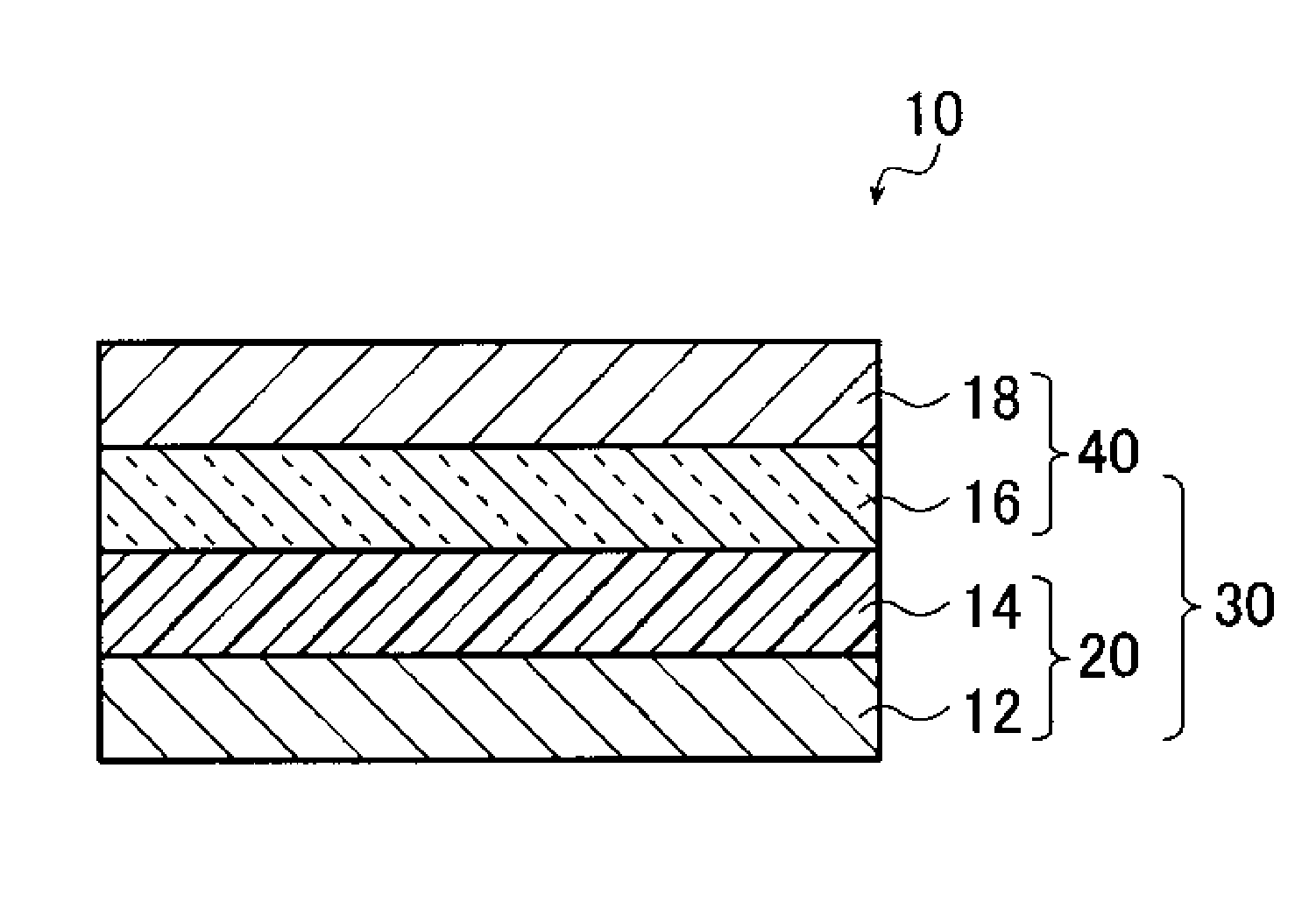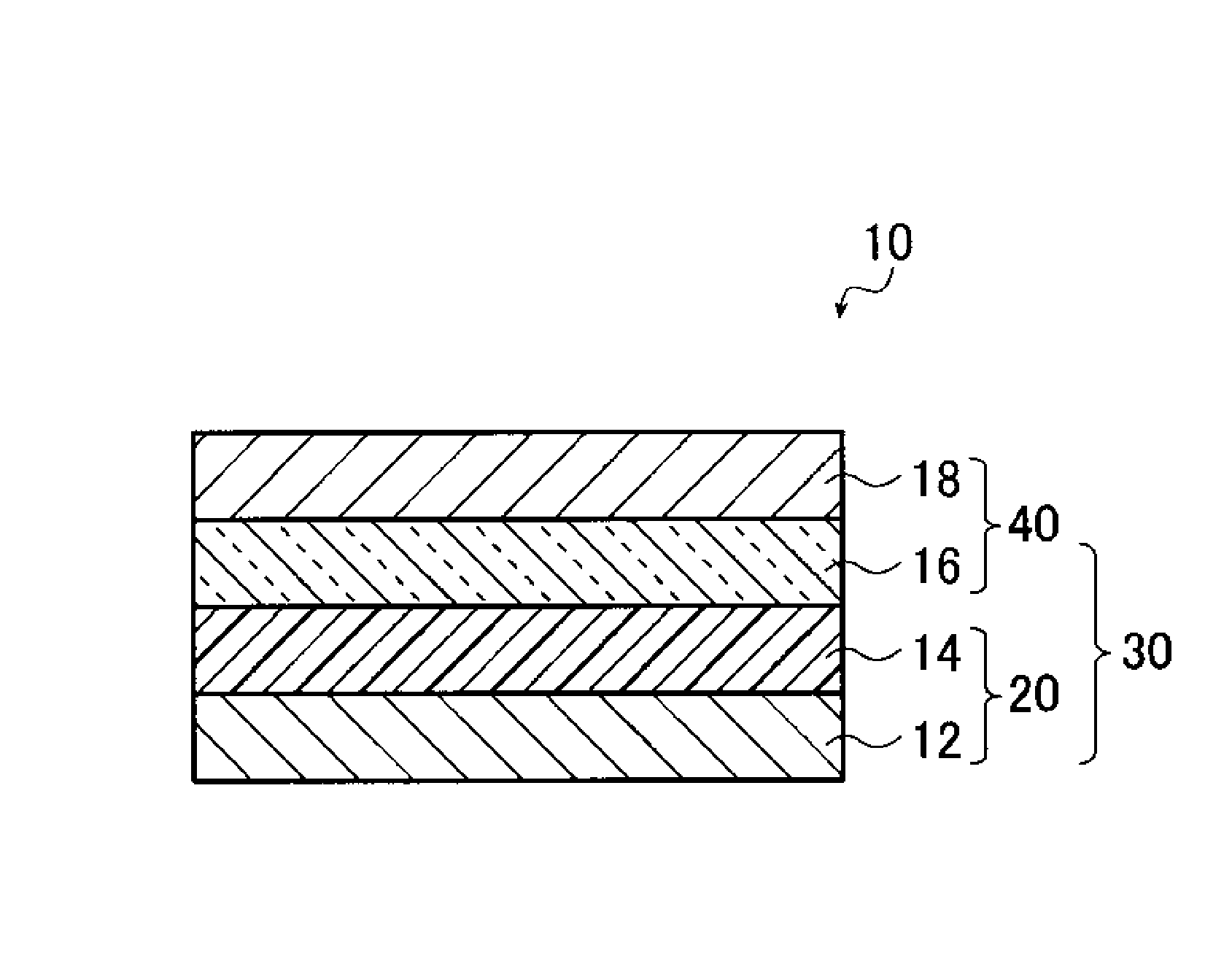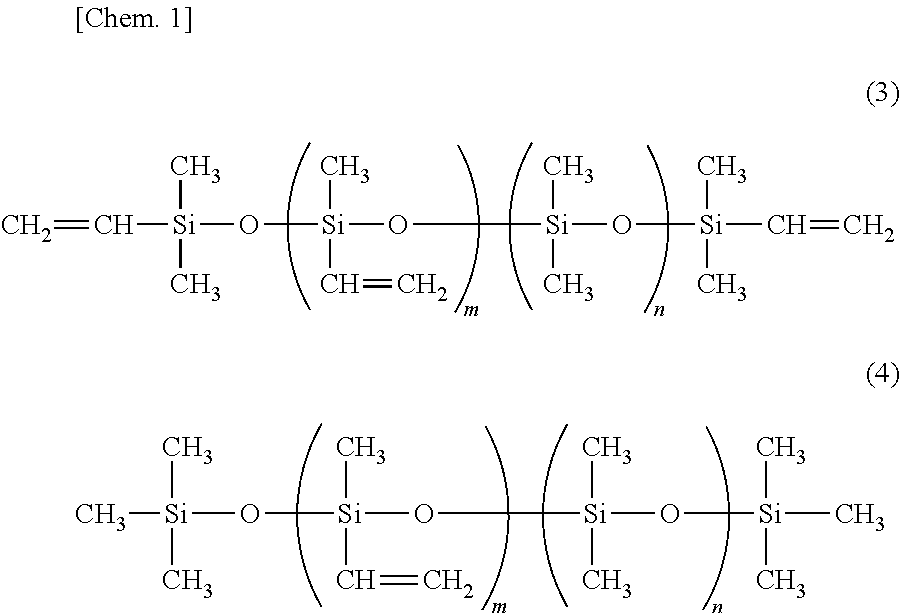Support, glass substrate laminate, support-equipped display device panel, and method for manufacturing display device panel
a technology of display device and glass substrate, which is applied in the direction of film/foil adhesive, light beam reproducing, instruments, etc., can solve the problems of reducing the weight and thickness of display devices, increasing the deflection of glass substrates, and reducing the strength of glass substrates, so as to improve peeling strength, improve heat resistance, and improve the effect of reactivity
- Summary
- Abstract
- Description
- Claims
- Application Information
AI Technical Summary
Benefits of technology
Problems solved by technology
Method used
Image
Examples
synthesis example 1
Synthesis of Organohydrogensiloxane A
[0155]A mixture of 5.4 g of 1,1,3,3-tetramethyldisiloxane, 96.2 g of tetramethylcyclotetrasiloxane and 118.6 g of octamethylcyclotetrasiloxane was cooled to 5° C., and 11.0 g of concentrated sulfuric acid was slowly added while stirring, then, further, 3.3 g of water was dropped over a period of 1 hour. The mixture was stirred for 8 hours while keeping the temperature at 10 to 20° C., then, toluene was added, and washing with water and separation of wasted acids were carried out until the siloxane layer became neutral. The neutral siloxane layer was concentrated by heating under reduced pressure thereby removing low boiling point fractions such as toluene and the like, to obtain an organohydrogensiloxane A of the following formula (6) in which k=40 and l=40.
[0156]
synthesis example 2
Synthesis of Organohydrogensiloxane B
[0157]An organohydrogensiloxane B of the above formula (6) in which k=100 and l=8 was obtained in the same manner as in Synthesis Example 1 excepting that 5.4 g of 1,1,3,3-tetramethyldisiloxane, 19.2 g of tetramethylcyclotetrasiloxane and 296.6 g of octamethylcyclotetrasiloxane were used as raw materials.
synthesis example 3
Synthesis of Alkenyl Group-Containing Siloxane D
[0160]To 3.7 g of 1,3-divinyl-1,1,3,3-tetramethyldisiloxane, 41.4 g of 1,3,5,7-tetramethyl-1,3,5,7-tetravinylcyclotetrasiloxane and 355.9 g of octamethylcyclotetrasiloxane were added a siliconate of potassium hydroxide in an amount of Si / K=20000 / 1 (molar ratio), and the mixture was allowed to cause an equilibrating reaction at 150° C. for 6 hours under a nitrogen atmosphere, then, ethylene chlorohydrin was added in an amount of 2 mol with respect to K, and neutralization thereof was performed at 120° C. for 2 hours. Thereafter, a bubbling treatment with heat was carried out at 160° C. for 6 hours under 666 Pa to cut volatile components, to obtain an alkenyl group-containing siloxane D in which the alkenyl equivalent number La per 100 g was 0.9 and Mw was 26000.
PUM
| Property | Measurement | Unit |
|---|---|---|
| heat weight reduction temperature | aaaaa | aaaaa |
| thickness | aaaaa | aaaaa |
| temperature | aaaaa | aaaaa |
Abstract
Description
Claims
Application Information
 Login to View More
Login to View More - R&D
- Intellectual Property
- Life Sciences
- Materials
- Tech Scout
- Unparalleled Data Quality
- Higher Quality Content
- 60% Fewer Hallucinations
Browse by: Latest US Patents, China's latest patents, Technical Efficacy Thesaurus, Application Domain, Technology Topic, Popular Technical Reports.
© 2025 PatSnap. All rights reserved.Legal|Privacy policy|Modern Slavery Act Transparency Statement|Sitemap|About US| Contact US: help@patsnap.com



